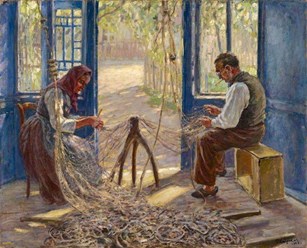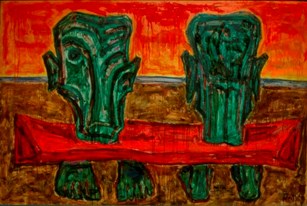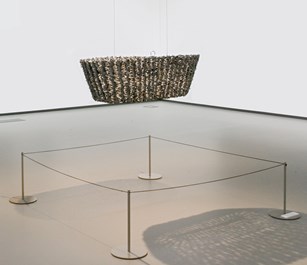Vilnius was the main centre of Lithuanian artistic life at the beginning of the 20th Century. Then it was a city of the Russian Empire, and the centre of the region. Artists who studied at schools in Warsaw, Krakow, St. Petersburg, Paris and Munich lived and worked here; art societies were founded and exhibitions were organised. Aartists who studied at the Vilnius Drawing School and later became famous include Jacques Lipchitz, Chaim Soutine, Lazar Segal, Michel Kikoine. The artists who lived in Vilnius were mostly Russian, Polish and Jewish. The Lithuanian art movement was stimulated by The Lithuanian Art Society, which organised exhibitions of Lithuanian art from 1907. Various tendencies, such as realism, impressionism, symbolism, modernism, can be seen in works by Vilnius artists.
Find out moreDevelopments of art in Independent Lithuania were interrupted by the occupation of the USSR, which began in 1941. After the war, Lithuanian art divided into two branches: those who stayed in the country and those who emigrated to the West. Artists who were forced to leave Lithuania spread across North and South America, Australia and Europe; they cherished traditions of their country's art, but and also experienced influences of art in other countries. The collection of the Lithuanian Art Museum also includes paintings, sculptures and prints by some of the artists who worked in exile, including Paulius Augius-Augustinavičius, Alfonsas Dargis, Pranas Domšaitis, Albinas Elskus, Pranas Gailius, Adomas Galdikas, Vytautas Ignas, Vytautas Kazimieras Jonynas, Vytautas Kasiulis, Vytautas Kašuba, Petras Kiaulėnas, Pranas Lapė, Žibuntas Mikšys, Antanas Mončys, Vaclovas Ratas-Rataiskis, Vytas Sakalas, Magdalena Stankūnienė, Elena Urbaitytė, Telesforas Valius, Albertas Vesčiūnas, Romas Viesulas, Viktoras Vizgirda, Kęstutis Zapkus, Kazimieras Žoromskis and others.
Find out moreWhen Lithuania restored independence in 1990, remarkable changes also occurred in the Arts. When the shackles of Soviet ideology were thrown off and the borders opened, artists were no longer restricted in their choice of subjects and means of expression. Postmodern manifestations of contemporary art were mastered: objects, installations, performances; video art, new photography and postmodern painting became popular. After 2000, the collection of the Lithuanian Art Museum was enriched with objects, photographs and videos by contemporary Lithuanian artists such as the Group of Academic Preparation, Mindaugas Navakas, Česlovas Lukenskas, Gintaras Makarevičius, Deimantas Narkevičius, Audrius Novickas, Artūras Raila, Eglė Rakauskaitė, Svajonė and Paulius Stanikas, Darius Žiūra and others.
Find out more




